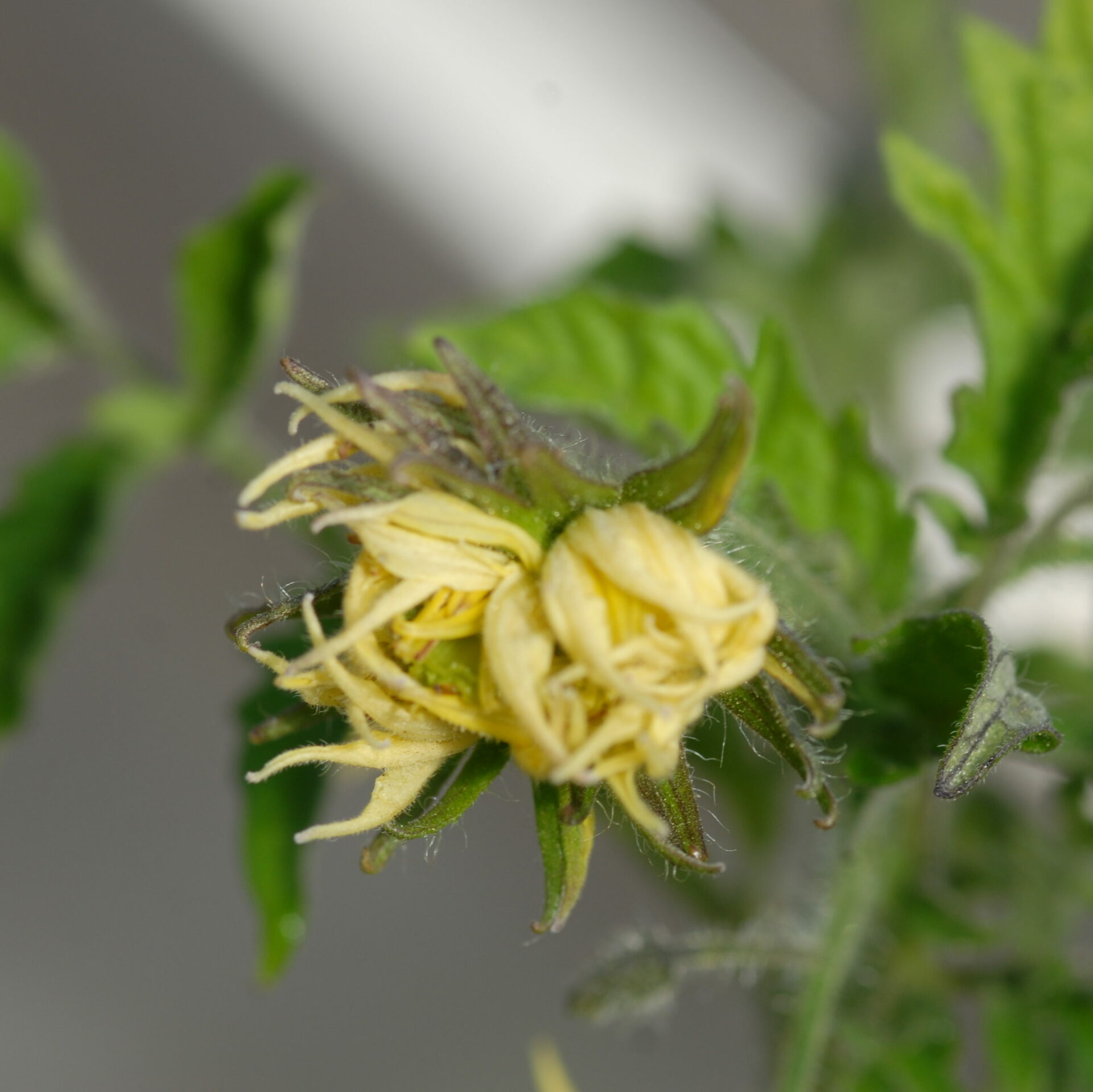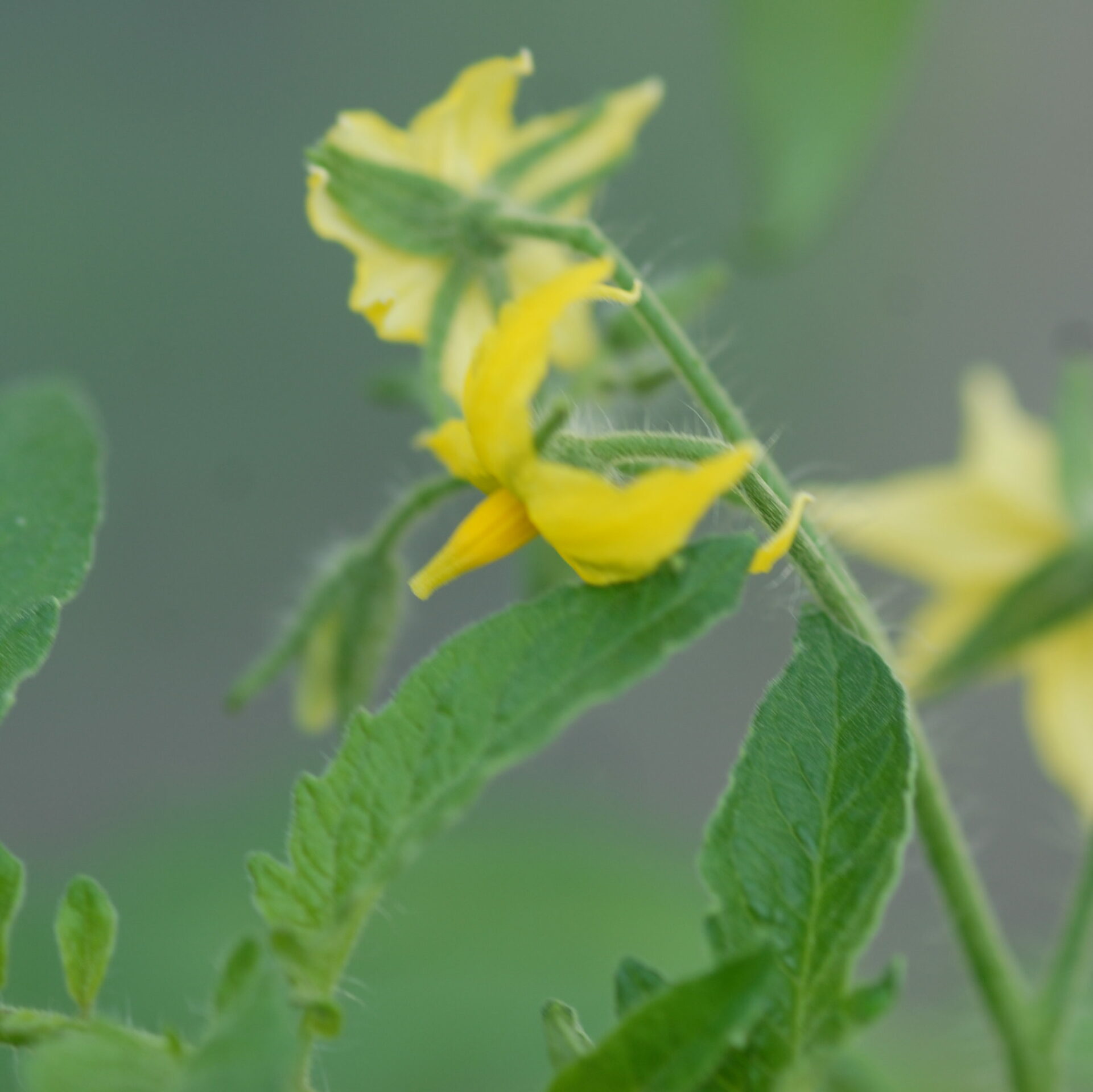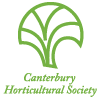In October’s meeting Alan Jolliffe shared a new product which helps to prevent Codling Moth on apple trees. ‘Bird Proof’, is a non-toxic, tacky repellent gel which can be used to form a repellent band on the tree-trunk which lasts for several seasons.
Peter Saunders provided the third instalment of A Visual Guide to Gardening through the Year complete with a slide-show. His tomatoes in the tunnel house are now flowering. He uses trickle irrigation to ensure water gets to the roots and not the weeds. This also prevents an overly humid atmosphere which can encourage fungal diseases.

 With heirloom varieties, the first flower is often large and distorted and this is called a ‘King’ flower (image far left). This should be removed. He allows 2 laterals for regular tomato plants (normal flower image left) and 4 for cherry. Extra nutrients such as dissolved blood and bone or a seaweed feed may be provided. However, if grown in pure compost they may not need anything extra.
With heirloom varieties, the first flower is often large and distorted and this is called a ‘King’ flower (image far left). This should be removed. He allows 2 laterals for regular tomato plants (normal flower image left) and 4 for cherry. Extra nutrients such as dissolved blood and bone or a seaweed feed may be provided. However, if grown in pure compost they may not need anything extra.
Tomatoes suffering from fruit end rot, which is caused by a lack of calcium, may benefit from a sprinkle of milk powder.
Peter’s Tomatillos are flowering. These little fruit are like a cape gooseberry and are good for salsas. His patio is full of young plants growing in boxes by brick walls, these radiate heat at night and provide shelter from easterly winds.
Chilli and capsicums need spraying later when white-fly appears. There are fewer problems with outdoor-grown plants than glass-house plants where diseases spread more quickly. Look out for berry bud moth, which lays eggs on the stem and burrows into the stalk to emerge at the flower spike, which will droop and curl up. BT spray may help, but don’t use Confidor which stays in the plant for two years and can kill bees.
Phil Ducker suggested that carrots, parsnips and lettuces should be sown in short rows every 3 weeks to keep up supplies. Dwarf beans will be ready in 50 days and climbing beans 75 days.
Our main speaker was Jeff Humm and his topic was, Vegetables: Improving Plant Health. Jeff was a long-time member of the Soil Health Association as well as responsible for maintaining the sizeable (45 acres) gardens at the Technology Park, and later the Sanitarium factory. He was also a Garden Show judge for 25 years. Jeff treated us to a slide-show of some wonderful colourful plantings. He also explained the benefits of adding crusher dust to compost to produce a complete planting medium. Compost provides the bacteria and crusher dust, derived from our main local greywacke rock, has up to 36 different minerals; these boost the immunity of your plants to stave off fungal mildews on growing plants.
Other tips he passed on: never let seedlings wilt; if they are stressed like this they will never grow well and will bolt.
The Fruit & Vegetable Circle meets monthly at 7.30pm on the last Wednesday evening of the month.
Admission is free to CHS members but bring some gold coins for the raffle and sales table!
Meeting place is the Deaf Society of Canterbury, 80 Fitzgerald Ave, (on the eastern side of the avenue on the corner of Fitzgerald Ave and Tuam Street.

